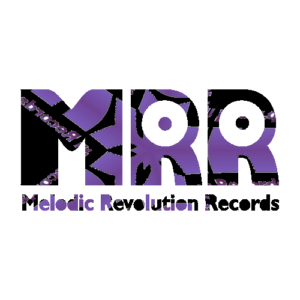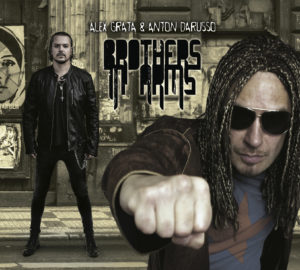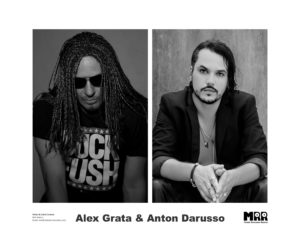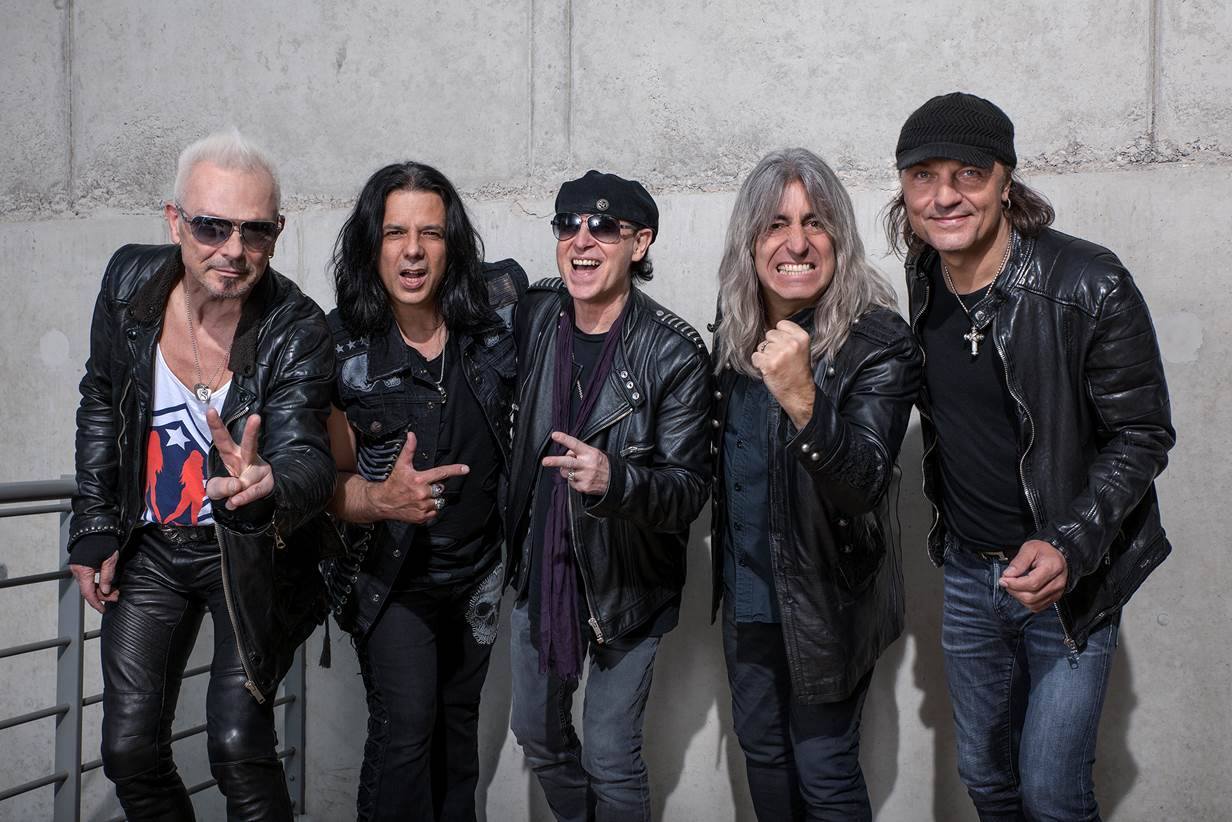Deep Purple | Machine Head | A 45th Anniversary Retrospective Celebration
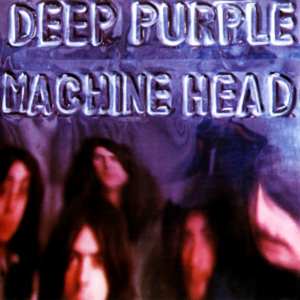
Deep Purple | Machine Head | A 45th Anniversary Retrospective
This Retrospective Is Done In The Deepest Sincere Memory Of Jon Lord
June 9, 1941 – July 16, 2012

Label: Warner Bros. Records
Release Year : 1972
Country: United Kingdom
Genre : Prog Related/Hard Rock/Proto Heavy Metal
Band Members
Mark 2 Machine Head Lineup
Ritchie Blackmore – Guitars
Jon Lord – Keyboards
Ian Gillian – Vocals/Light Percussion
John Glover – Bass
Ian Paice – Drums
Track List
Highway Star
Maybe I’m A Leo
Pictures Of Home
Never Before
Smoke On The Water
Lazy
Space Truckin’
Contact Links Deep Purple
Deep Purple Official Facebook Page
Deep Purple Official YouTube Channel
Contact Links Ritchie Blackmore
Ritchie Blackmore/Blackmores Night Official Website
Ritchie Blackmore Official Facebook Page
Ritchie Blackmore Official YouTube Channel
Contact Links Jon Lord (RIP)
Jon Lord Official Facebook Page
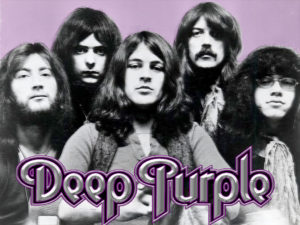
Towards my preparation in writing the retrospective of this ‘Classic Masterpiece’, I struggled with the fact of where to start. After all Deep Purple’s Machine Head is the band’s sixth album and third album under the classic ‘Mark 2‘ lineup that would cement their place in both rock n roll history and heavy metal history. I even debated whether to even write it at all giving into to my own delusions that this album has been over explained through the last 45 years. However the more I thought about it the more I felt that it still needed to be revisited due to its concrete significance in the history of recorded music in general. Therefore pull up a cup of coffee, cuppa tea or even a pint of ale because you are about to embark on a journey, a retrospective that is Deep Purple’s Machine Head.
Though not without its moments, 1971’s Fireball described something of a non-descript holding pattern for Deep Purple. Not a bad album as such it was, artistically at least, a curious underachiever compared to 1970’s In Rock. What they needed was something with as much impact and which delivered them new standards to ensure their upwards path. With not a lot of spare change in the pocket as far as new material went, the recording session was a fraught affair. Yet out of such adversity, Purple dug deep into their reserves producing their strongest and most consistent set.
The band at this time decided a change of scenery was in order and decided to go to Montreux, Switzerland, and record through out the entire month of December in 1971. The band’s main reasons for a relocation to Switzerland was basically economical. The band could avoid paying some serious recording taxes as none existed in Switzerland much like they had back in England. They were also seeking solace as a band for creative reasons. Third and final reason they relocated there to to having no distractions that home would of provided.
The name Machine Head was inspired simply by the adjustment knobs and the head they rested on with Roger Glover’s bass. All the head at the top of the neck with the knobs has always been a simple machine. Thus the name Machine Head stuck. Released in 1972, Machine Head become the benchmark against which everything that followed would be judged against. In the canon of heavy rock this is an album replete with classic tracks. Concise in nature, killer punches are only ever a minute away no matter which song you play. Vocalist Ian Gillan excels himself on “Highway Star,” and “Never Before”, the latter an excellent single, released ahead of the album covering both pop, rock and some righteously funky turnarounds. Blackmore dominates the album turning in some of his most understated and reflective playing on “When A Blind Man Cries” (the b-side to the single and not included on the original album) and of course, “Smoke On The Water.”
Deep Purple’s Machine Head would go on to be consider a prototype album for the origins of a new yet unidentified genre of heavier edged rock. The title would ultimately come to be known as Heavy Metal. Machine Head would also go on to give many current progressive metal bands some very fluent inspiration as well. Bands like Dream Theater, Iron Maiden, Dimmu Borgir and Arjen Luccassen with (Ayreon & Star One) to name a few, would all take elements away from Deep Purple and Machine Head decades later. Now without any further delay let’s either go down memory lane for those of you that were there or be introduced to one of the top 10 classic hard rock albums in Deep Purple’s Machine Head.
Highway Star
This song is about a man and his love for his high-powered car, which he says can out-race every other car. This was written by Ritchie Blackmore, Ian Gillan, Ian Paice, Jon Lord, and Roger Glover. It may have been inspired by Steppenwolf’s “Born To Be Wild,” and along with “Radar Love” is one of the most famous driving songs in rock.
According to Roger Glover, they wrote this song on their tour bus on the way to a gig at the Portsmouth Guildhall (in the UK), on September 13, 1971, where they debuted the song. They wrote it because they were getting sick of their opening number, “Speed King,” and “Highway Star” became the new opener for their shows. The song evolved through live performances, and was recorded for the Machine Head album in December 1971.
Many people consider this the first “Speed Metal” song, a division of Heavy Metal and a genre later popularized by bands such as Venom, Motorhead and Metallica.
The guitar solo in this song was ranked #19 in the List of 100 Greatest Guitar Solos by Guitar World magazine. This has been featured in several episodes of That ’70s Show.
Maybe I’m A Leo
Roger Glover says:
“I wrote the riff to “Maybe I’m a Leo” after hearing John Lennon’s “How Do You Sleep?”. I liked the idea that the riff didn’t start on the down beat, like 99% of riffs do. Most of the songs on Machine Head were from the first take, or not long after.”
Singer Ian Gillan is a Leo (born 19 August), the only group member at the time with that astrological sign.
The song was rarely played by the band live, but three live recordings of it have been released on albums, Deep Purple in Concert, recorded in 1972, Live at the Olympia ’96, and Live at Montreux 2011.
The SACD version of Machine Head has an alternative guitar solo on “Maybe I’m a Leo”.
Pictures Of Home
According to Classic Rock Magazine Review:
“Pictures of Home” is Deep Purple at their most poignant, a driving rhythm topped by sweeping vocals pushing out deep lyrical motifs, all accented by the distinct, distorted Hammond organ of John Lord. Glover even gets a short bass solo in the middle section before Blackmore warms for lift-off before a surprising false stop and comeback makes the song all the more interesting”.
Ritchie Blackmore says that he was inspired by a short wave radio channel, “probably from Bulgaria or Turkey” when writing the main riff. Ian Gillan’s lyrics were a result of studio paranoia and home sickness.
It is the only song from Machine Head that was not performed live during Deep Purple’s 1972 tour
Never Before
A song by Deep Purple, which appears as the fourth song on their 1972 album Machine Head. It was also released as a single and reached #35 in the UK. A promo video was made for the song in 1972. The single version of the song is an edit of the album version and lasts 3:30.
The guitar riff in Peter Frampton’s “Do You Feel Like We Do” bears a strong resemblance to this song. “Never Before” has rarely been performed live. The only live recording of this song appears on Deep Purple in Concert, which was recorded at the time of the single release, a week or so before Machine Head was released.
Deep Purple performed “Never Before” on tour in 2004, when they played the whole Machine Head album.
Smoke On The Water
This song took inspiration from a fire in the Casino at Montreux, Switzerland on December 4, 1971. The band was going to record their Machine Head album there right after a Frank Zappa concert, but someone fired a flare gun at the ceiling during Frank Zappa’s show, which set the place on fire.
Deep Purple was in the audience for the show, and lead singer Ian Gillan recalls two flares being shot by someone sitting behind him which landed in the top corner of the building and quickly set it ablaze. Zappa stopped the show and helped ensure an orderly exit. Deep Purple watched the blaze from a nearby restaurant, and when the fire died down, a layer of smoke had covered Lake Geneva, which the casino overlooked. This image gave bass player Roger Glover the idea for a song title: “Smoke On The Water,” and Gillan wrote the lyric about their saga recording the Machine Head album.
The band was relocated to the Grand Hotel in Montreux, where they recorded the album using the Rolling Stones mobile studio. They needed one more song, so they put together “Smoke On The Water” using Gillan’s lyric and riff the guitarist Ritchie Blackmore came up with. The result was a song telling the story of these strange events just days after they happened – the recording sessions took place from December 6-21.
Frank Zappa, who is mentioned in the lyrics, lost all his equipment in the fire. He then broke his leg a few days later when a fan pulled him into the crowd at a show in England. This prompted Ian Gillan to say “Break a leg, Frank,” into the microphone after recording this for a BBC special in 1972.
Deep Purple bass player Roger Glover had some doubts about the title: he knew it was great but was reluctant to use it because it sounded like a drug song.
Ritchie Blackmore has an affinity for renaissance music, which he writes and performs in his duo Blackmore’s Night. He says that he first took an interest in the form in 1971 when he saw a BBC program called Wives of Henry VIII, and that there is indeed a trace of Renaissance in “Smoke On The Water.” “The riff is done in fourths and fifths – a medieval modal scale,” he explained on MySpace Music. “It makes it appear more dark and foreboding. Not like today’s pop music thirds.”
The band did not think this would be a hit and rarely played it live. It took off when they released it as a US single over a year after the album came out. Talking about the song’s merits as live material, Roger Glover said in Metal Hammer, “I think ‘Smoke On The Water’ is the biggest song that Purple will ever have and there’s always a pressure to play it, and it’s not the greatest live song, it’s a good song but you sorta plod through it. The excitement comes from the audience. And there’s always the apprehension that Ritchie (Blackmore) isn’t gonna want to do it, ’cause he’s probably fed up with doing it.”
When we spoke with Steve Morse, who became Deep Purple’s guitarist in 1994, he talked about performing this song live. “On a tune that I didn’t write like ‘Smoke On The Water,’ I try to tread a line between homage and respect and originality,” he said. “So, say, on the solo, I take it a out a little bit and do it my way for a little bit, and then bring it back to more like the original, and wrap it up with a lick that everybody would recognize. That’s about as much as I can suggest somebody do because there’s ingrained memories of the song in peoples’ minds.”
“Funky Claude,” as in the lyrics “Funky Claude was running in and out pulling kids out the ground,” is Claude Nobs, a man who helped rescue some people in the fire and found another hotel for the band to stay. He is the co-founder of the prestigious Montreux Jazz Festival.
Nobs explained to Gibson.com how this song arose out of the ashes: “Deep Purple were watching the whole fire from their hotel window, and they said, ‘Oh my God, look what happened. Poor Claude and there’s no casino anymore!’ They were supposed to do a live gig [at the casino] and record the new album there. Finally I found a place in a little abandoned hotel next to my house and we made a temporary studio for them. One day they were coming up for dinner at my house and they said, ‘Claude we did a little surprise for you, but it’s not going to be on the album. It’s a tune called “Smoke On The Water.'” So I listened to it. I said, ‘You’re crazy. It’s going to be a huge thing.’ Now there’s no guitar player in the world who doesn’t know [he hums the riff]. They said, ‘Oh if you believe so we’ll put it on the album.’ It’s actually the very precise description of the fire in the casino, of Frank Zappa getting the kids out of the casino, and every detail in the song is true. It’s what really happened. In the middle of the song, it says ‘Funky Claude was getting people out of the building,’ and actually when I meet a lot of rock musicians, they still say, ‘Oh here comes Funky Claude.'”
The B-side of the single was another version of the song, recorded live in Japan.
In 1989, Former members Ritchie Blackmore and Ian Gillan released a new version of this with Robert Plant, Brian May, and Bruce Dickinson, Alex Lifeson. They called the project “Rock Aid Armenia,” with proceeds going to victims of the Armenian earthquake. I have included a video of the extended cut specifically done for charity at the time.
Homer is heard crooning to this song in an a episode of The Simpsons in which he uses medicinal marijuana.
Pat Boone covered this on In a Metal Mood. On the album, he performed heavy metal songs with string instruments, pianos, etc., but in this case kept the famous guitar riff and even allowed the guitarist a solo. Otherwise, it’s a very jazzy cover.
The famous guitar riff is performed in the 2003 Jack Black film School Of Rock.
On June 3, 2007 in Kansas City, Kansas, 1,721 guitarists gathered to play this song together and break the record for most guitarists playing at one time. The entire song was played, though only the one lead guitar played the solo. Guitarists from as far as Scotland came out for the event. The event was organized by radio station KYYS.
It’s hard to compete with outsourcing, however, and the record was beaten on October 26, 2007 when 1,730 guitarists gathered in Shillong, India to perform “Knocking On Heaven’s Door.”
This was used in commercials for Dodge trucks. The song plays on a jukebox that a guy is eyeing in an antique store. His wife gets her way and they take home a piece of furniture instead – the point being the large payload capacity of the truck.
According to an interview with Ian Gillian on VH1’s Classic Albums: Machine Head, the band did not have much money when recording this album and were renting a recording studio. They stayed past when they were supposed to get out. As they were recording this song, the police were knocking on the door of the studio to kick them out.
In a 2008 survey of students from music schools across London, this topped a poll to find the best ever guitar riff. Nirvana’s “Smells Like Teen Spirit” came second and Aerosmith’s “Walk This Way” third.
According to the London Times newspaper, Ritchie Blackmore was embarrassed to present this song to his fellow members of Deep Purple because it was such a Neanderthal tune for a guitarist of his caliber to come up with.
The lyrics, “Swiss time was running out” meant that their visas were going to expire soon. They wrote the songs and recorded them in a matter of weeks.
Many beginners try to play this when they pick up a guitar, and they usually play it wrong. Here’s how: Use the open G and D strings as the starting point and you pluck the strings with a finger each, not a pick. Lots of people play this from the 5th fret of the A and D string, which is wrong. Smoke On The Water ranks up there with icons like Stairway To Heaven Led Zeppelin, Freebird, Lynyrd Skynyrd, Dream On Aerosmith and even Tom Sawyer Rush. .
Fender.com asked Ritchie Blackmore how he came up with the song’s famous riff. He replied:
“Ian Paice (Deep Purple drummer) and I often used to jam, just the two of us. It was a natural riff to play at the time. It was the first thing that came into my head during that jam.”
Lazy
Most definitely not to be confused with the Irving Berlin standard of the same name, this album track is actually quite an uptempo number. Although basically a blues based ego trip for lead guitarist Ritchie Blackmore and keyboard wizard Jon Lord, vocalist Ian Gillan also chips in on harmonica.
The song’s most noticeable feature is its riff, the words are largely superfluous:
You’re lazy, just stay in bed,
You’re lazy, just stay in bed,
You don’t want no money,
You don’t want no bread.
Etc.
“Lazy” was co-written by all five members of Deep Purple Mark II (ie Blackmore, Gillan, Glover, Lord and Paice); group compositions being a trademark of this particular line up.
The studio version runs to 7 minutes 23 seconds and was recorded for the Machine Head sessions at Montreaux, Switzerland in December 1971. Being a track that lends readily to improvisation – as well as the aforementioned ego tripping – on stage it would often be spun out for considerably longer. A quarter of a century after it was released, Ritchie Blackmore’s “Lazy” guitar solo was voted number 75 of all time by a readers’ poll for Guitar World magazine.
Space Truckin’
It is the seventh and final track on the Machine Head album. Its lyrics talk of space travel and it showcases the vocal abilities of singer Ian Gillan and powerful drumming of Ian Paice.
The intro was featured on the TV show WKRP in Cincinnati on the episode “The Airplane Show” (later issues of the episode replaced this track with generic music). The song is featured as a downloadable track for the Rock Band series of music video games as of 30 December 2008.The song appeared in the film Lords of Dogtown, the documentary Warren Miller’s Dynasty and video game Guitar Hero: Van Halen.
The 1997 remix of the song was featured in the first episode of Ash vs Evil Dead.
Several cover versions of Space Truckin’ would be done over the years. These are the most notable cover versions throughout the last 45 years.
Dream Theater covered this and the whole Made in Japan album.
Arjen Anthony Lucassen’s Star One covered the song during their 2002 European tour, as seen on the Live on Earth DVD.
American thrash metal band Overkill included a cover of the song on their 1999 album Coverkill.
Serbian hard rock band Cactus Jack released a cover on their 2003 Deep Purple Tribute album.
American industrial metal band Ministry include their version of the song in the all-covers album Cover Up.
Tesla’s version is the first track on their album Real to Reel.
American thrash metal band Vengeance Rising covered the song on their 1990 album Once Dead.,
William Shatner covered the song on his album Seeking Major Tom.
Iron Maiden’s cover of this song appeared on the tribute album Re-Machined: A Tribute to Deep Purple’s Machine Head, which was released in September 2012.
Kraus covered this song in 2011.
Original Extended Live Performance by Deep Purple on Made In Japan.
As I said at the top of this retrospective it was a debate whether I was still going to do this here at Power Of Prog as planned. On this day in 1972 Deep Purple unleashed a tempest and monster with Machine Head. As a matter of fact and I will end this here, Machine Head went immediately to No. 1 in the U.K. and remained on the charts for weeks, aided by singles including “Never Before,” “Lazy” and “Highway Star.” Machine Head was more of a slow burn in the United States, partially because “Smoke on the Water” wasn’t released as a single until May 1973. The song became Purple’s most successful U.S. single (hitting No. 4 on Billboard, as did 1968’s “Hush”) and pushed its parent album to No. 7. In all, Machine Head spent more than two years on the American charts, as Deep Purple become hard rock heavyweights known around the world. Four and a half decades later, it remains the band’s biggest album.

